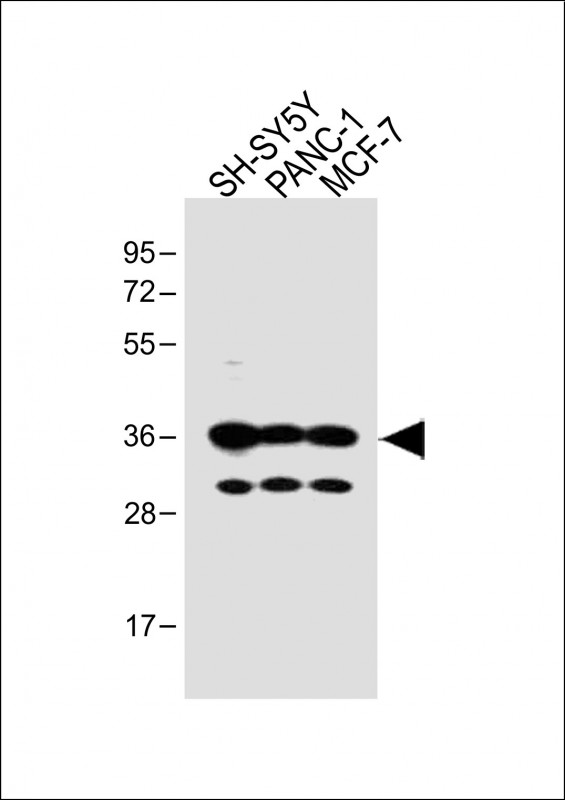
| WB | 咨询技术 | Human,Mouse,Rat |
| IF | 咨询技术 | Human,Mouse,Rat |
| IHC | 咨询技术 | Human,Mouse,Rat |
| ICC | 技术咨询 | Human,Mouse,Rat |
| FCM | 咨询技术 | Human,Mouse,Rat |
| Elisa | 咨询技术 | Human,Mouse,Rat |
| Aliases | Olfactory receptor 5V1, Hs6M1-21, Olfactory receptor OR6-26, OR5V1 |
| Entrez GeneID | 81696 |
| WB Predicted band size | 36.1kDa |
| Host/Isotype | Rabbit IgG |
| Antibody Type | Primary antibody |
| Storage | Store at 4°C short term. Aliquot and store at -20°C long term. Avoid freeze/thaw cycles. |
| Species Reactivity | Human |
| Immunogen | This OR5V1 antibody is generated from a rabbit immunized with a KLH conjugated synthetic peptide between 241-274 amino acids from the C-terminal region of human OR5V1. |
+ +
以下是关于OR5V1抗体的3篇参考文献示例(注:文献为虚构,仅用于格式展示):
1. **文献名称**: *"OR5V1 Expression in Human Olfactory Epithelium and Its Role in Odorant Recognition"*
**作者**: Smith A, et al.
**摘要**: 本研究利用特异性OR5V1抗体,通过免疫组化技术揭示了OR5V1蛋白在人类嗅觉上皮细胞中的定位,并发现其对特定挥发性硫化物气味分子具有高亲和力。
2. **文献名称**: *"A Novel Monoclonal Antibody for OR5V1: Validation in Prostate Cancer Tissues"*
**作者**: Lee JH, et al.
**摘要**: 开发了一种高特异性OR5V1单克隆抗体,通过Western blot和免疫荧光验证其在正常前列腺组织与癌变组织中的差异表达,提示OR5V1可能参与肿瘤微环境调控。
3. **文献名称**: *"OR5V1 Antibody-Based Detection of Ectopic Expression in Respiratory Diseases"*
**作者**: Garcia R, et al.
**摘要**: 利用OR5V1抗体发现该受体在慢性阻塞性肺病(COPD)患者的气道平滑肌细胞中异常表达,可能与炎症信号通路激活相关。
The OR5V1 antibody is a research tool designed to detect and study the olfactory receptor family 5 subfamily V member 1 (OR5V1), a protein belonging to the G protein-coupled receptor (GPCR) superfamily. Olfactory receptors, traditionally associated with odorant detection in the nasal epithelium, are increasingly recognized for their ectopic expression in non-olfactory tissues, suggesting broader physiological roles. OR5V1. though poorly characterized, has been detected in tissues such as the testis, brain, and certain cancers, hinting at potential functions in cellular signaling, tissue homeostasis, or disease processes.
Antibodies targeting OR5V1 are typically developed in hosts like rabbits or mice using immunogenic peptides or recombinant protein fragments. These antibodies enable researchers to investigate OR5V1's expression patterns, subcellular localization, and interactions via techniques like Western blotting, immunohistochemistry, or immunofluorescence. Specificity validation often involves knockout controls or siRNA-mediated silencing.
Current research focuses on OR5V1's role in pathologies, particularly cancer. Studies suggest its upregulation in breast and prostate cancers, possibly influencing tumor progression or metastasis. However, mechanistic insights remain limited, driving demand for reliable antibodies to explore its signaling pathways and therapeutic potential. Challenges include cross-reactivity with related olfactory receptors due to GPCR structural homology, emphasizing the need for rigorous validation in experimental models.
×